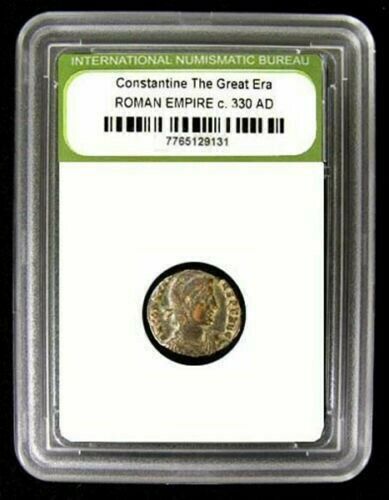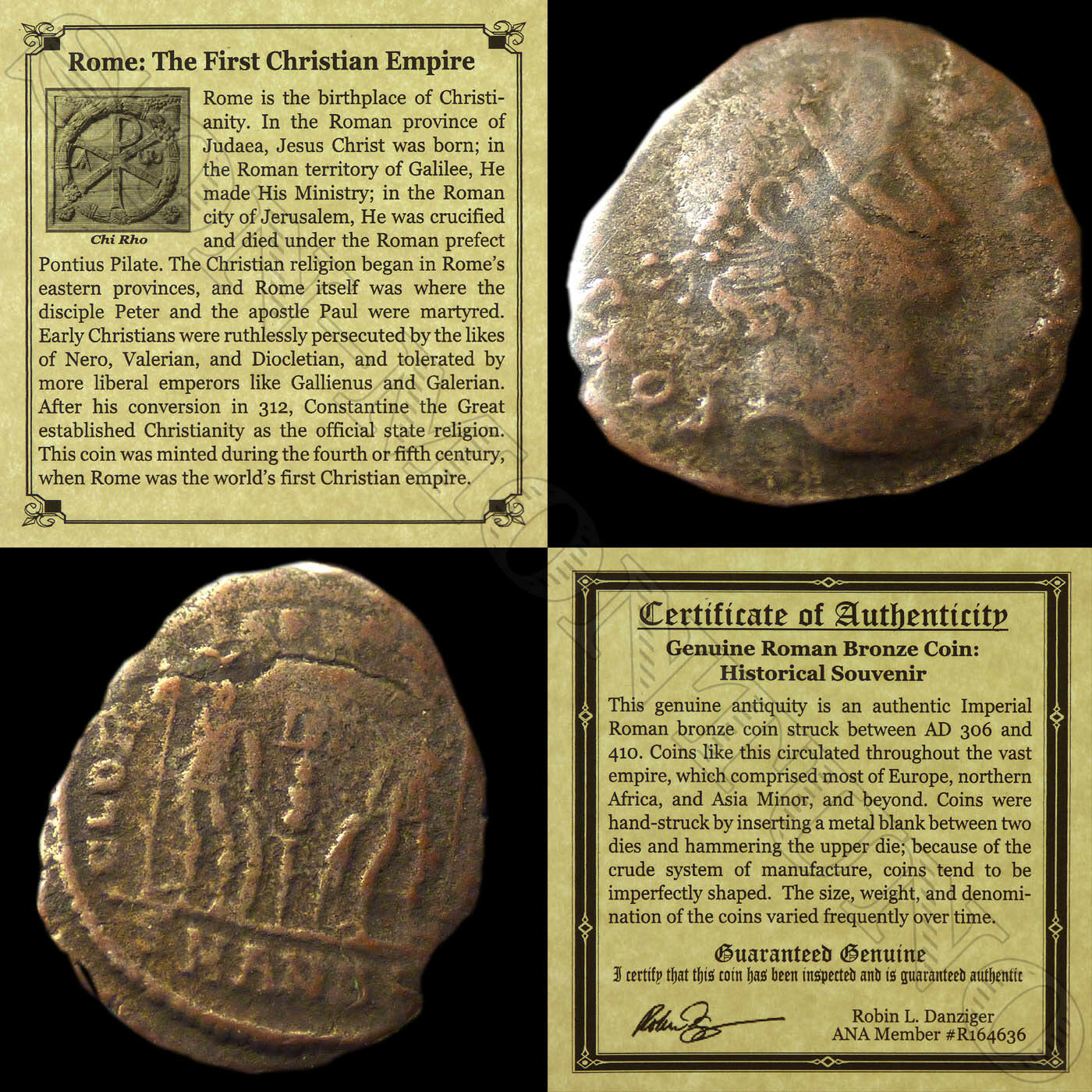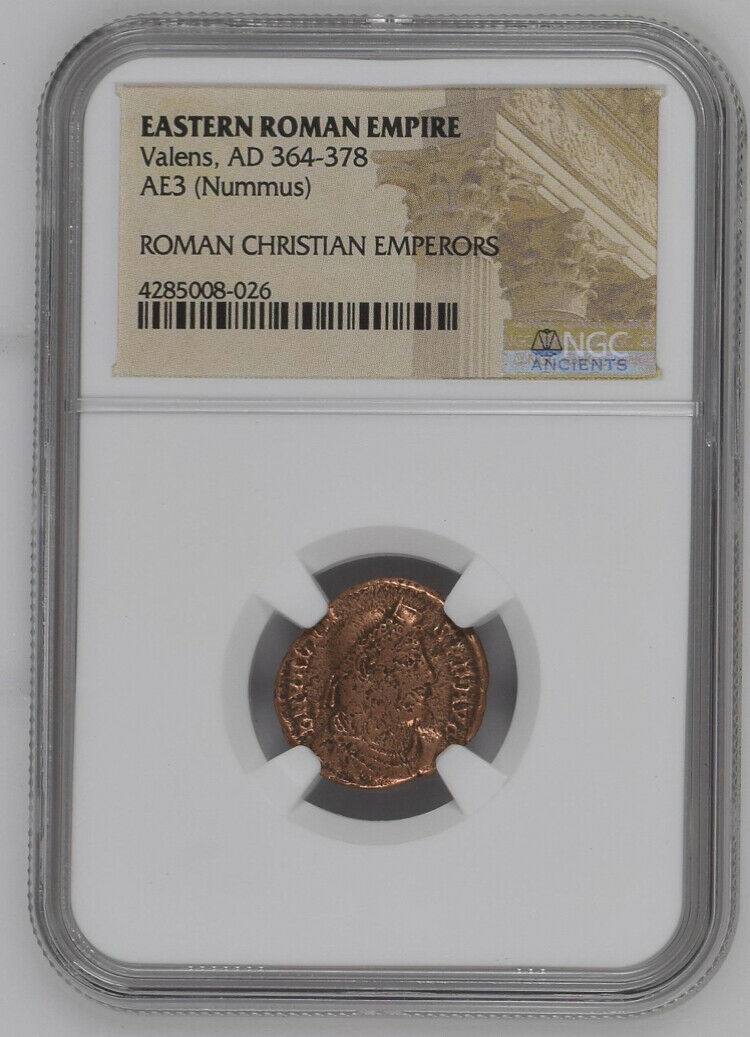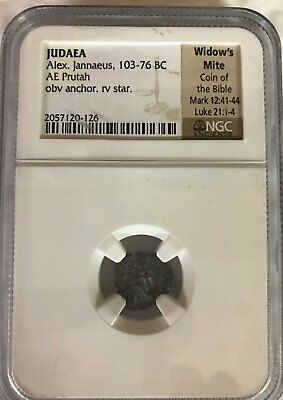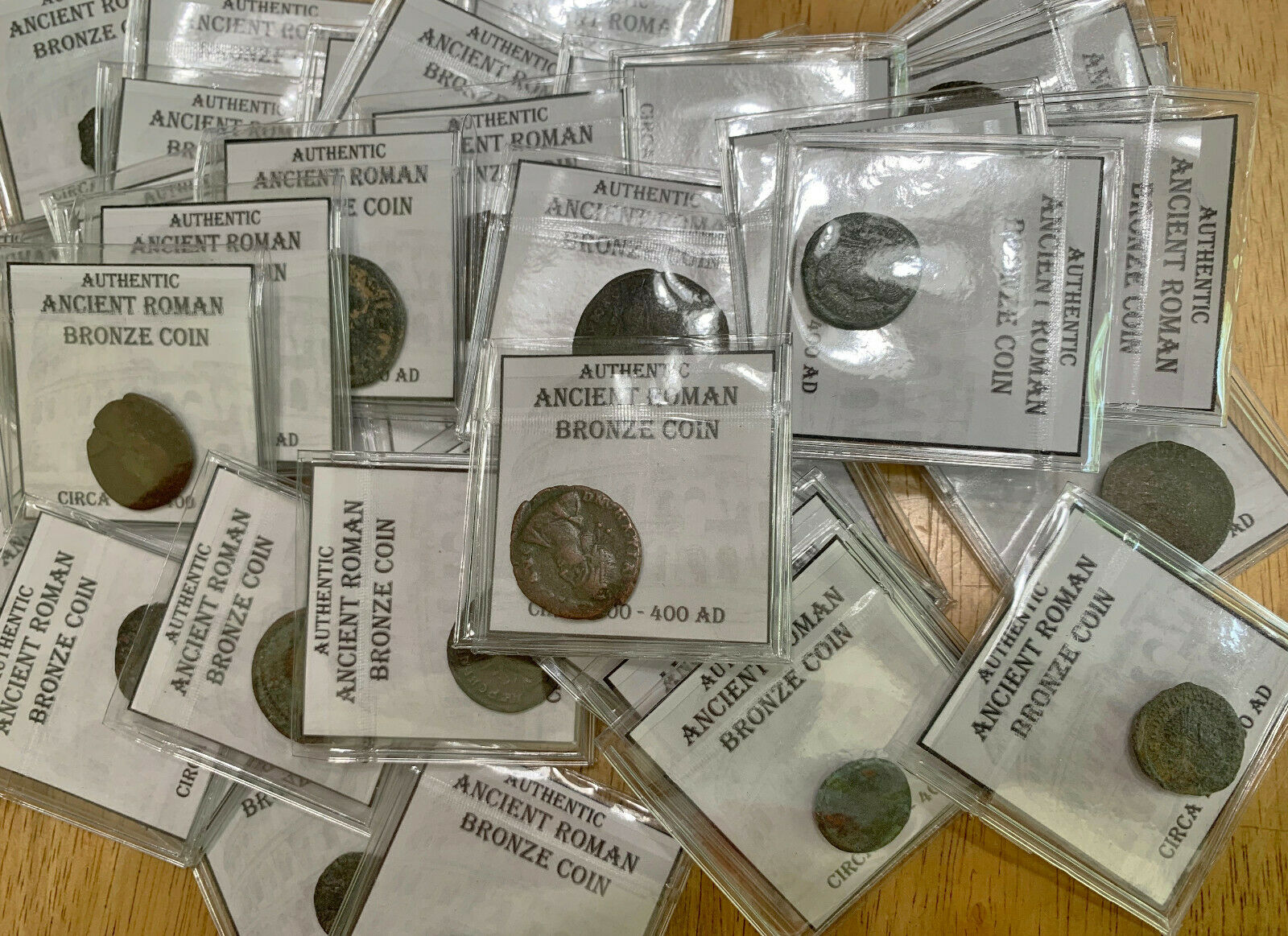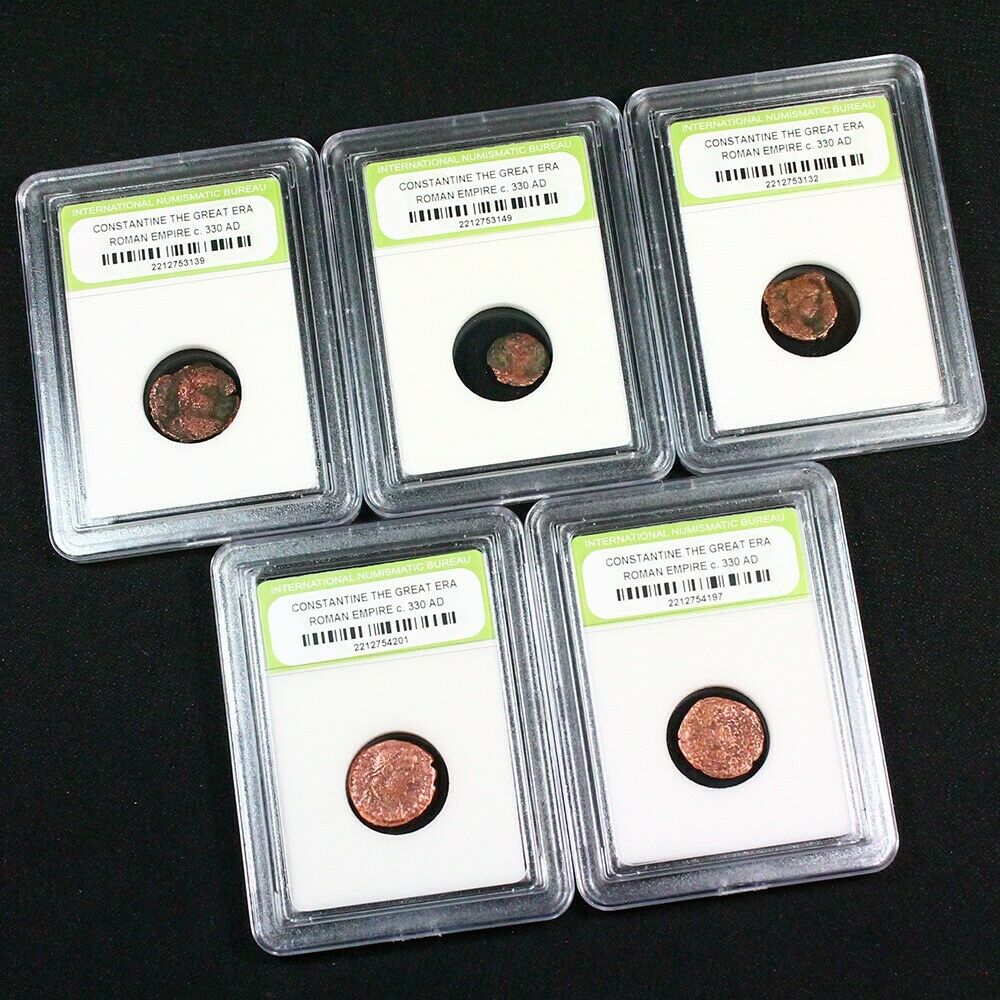-40%
Caracalla (AD 198-217) Roman AR silver denarius coin Spes RIC 341 EF
$ 105.6
- Description
- Size Guide
Description
Roman ImperialCaracalla (AD 198-217)
Denomination
: silver AR denarius
Weight:
3.61 grams
Diameter
: 18 mm
Die Axis
: 7 h
Struck
: AD 199
Mint
: Laodicea ad Mare (near modern Latakia, Syria)
Obverse
: IMP CAE M AVR ANT AVG P TR P II, laureate and draped bust right
Reverse
: SPES PVBLICA, Spes advancing to left, holding flower and raising hem of robe
References
: Roman Imperial Coinage (RIC) volume IV 341;
Coins of the Roman Empire in the British Museum (BMCRE) volume V 697; Roman Silver Coins (RSC) volume III 600
Grade / Comments
: Extremely Fine
Coins are guaranteed genuine.
Returns may be made within 14 days for any reason as long as items are unaltered. Buyer to bear cost and risk of return postage.
Biographical and historical information courtesy of De Imperatoribus Romanis - entry by Michael L. Meckler, Ohio State University
The elder of the two sons of the emperor Septimius Severus, Caracalla is best-known for arranging the murder of his brother Geta after the two engaged in a power struggle in the months after their father's death. The murder offended contemporaries and colored the following five years of Caracalla's reign, a reign that ended on a Syrian road with the emperor's own murder.
Caracalla was born 4 April 188 in Lyon, where his father was serving as governor of the province of Gallia Lugdunensis under the emperor Commodus. The child's name originally seems to have been Lucius Septimius Bassianus, the
cognomen
commemorating the family of the boy's Syrian mother, Julia Domna. When he was seven years old, his name was changed to Marcus Aurelius Antoninus. The name change was a way of connecting the family of Severus to that of the Antonines. Caracalla was a nickname taken from the name of a type of cloak popularized by the emperor, but this nickname, originally derisive, was never used officially.
From the time of his name change to Antoninus, Caracalla was the designated heir of Severus. Less than three years later he was proclaimed emperor, officially joining his father as co-rulers of the empire.
At the age of 14 he was married to the daughter of the praetorian prefect Plautianus Publia Fulvia Plautilla, but the teenager despised his wife. The marriage ended less than three years later after the execution of Plautianus for treason, and there were no children.
Squabbling and rivalry developed between Caracalla and Geta, who was only 11 months younger than his brother. Severus felt the lack of responsibilities in Rome contributed to the ill-will between his sons and decided that the family would travel to Britain to oversee military operations there. Caracalla was involved in directing the army's campaigns, while Geta was given civilian authority and a promotion to joint emperor with his father and brother. Within two years of the imperial family's arrival in Britain, Severus' health began to deteriorate, but his sons' relationship showed no signs of improvement. Severus died 4 February 211. Caracalla was 22 years old, Geta 21.
The brothers returned to Rome as joint emperors,but they eyed each other with suspicion and failed to cooperate on government appointments and policy decisions. Caracalla was being advised to have Geta murdered, and after at least one unsuccessful attempt, Geta was killed in late December 211. The murder led to a wholesale slaughter of Geta's supporters and sympathizers, and soldiers were allowed to wreak havoc on the residents of Rome. The looting and bloodshed lasted for at least two weeks, and one contemporary source claims 20,000 people were killed.
The year 212 saw a flurry of administrative reforms under the young emperor's leadership. Soldiers received increases in pay and in legal rights, but the most noteworthy change was the bestowal of Roman citizenship upon all free residents of the empire. This grant of universal citizenship, called by scholars the
Constitutio Antoniniana,
allowed for greater standardization in the increasingly bureaucratic Roman state. Construction was also well underway on the magnificant baths in Rome that would bear the emperor's name. The main building seems to have been completed four years later, but the entire complex was not finished until the reign of Alexander Severus.
Caracalla spent little time in Rome after the spring of 213. A visit to Gaul and a military campaign along the borders of Upper Germany and Raetia occupied much of the rest of the year. Winter may have been spent in Rome, but the following year Caracalla made a journey to the East in preparation for a war against the Parthians. Along the way, the emperor displayed an increasing fascination and identification with Alexander the Great. Like the Macedonian prince, however, Caracalla would not survive an expedition to the East. Only his ashes would return to Rome.
Civil war in the Parthian realm between brothers and rival kings Vologaeses VI and Artabanus V brought instability to the entire region, and Caracalla wished to take advantage of that instability to increase Roman control. Osroene was annexed in 213, but an attempt in the same year to take over Armenia backfired. Caracalla's campaigns in the East seemed designed to harass the Parthians more than anything else. In 215, Caracalla suspended plans to invade Parthia after Vologaeses handed over two political refugees, although Roman troops were sent into Armenia. The following year the emperor led his troops into Mesopotamia after being rebuffed in his request to marry the daughter of Artabanus. Roman armies were generally unopposed in their forays, the Parthian forces having retreated farther east. The Romans returned back across the Euphrates, wintering in Edessa.
Between campaigning seasons, Caracalla made a notorious visit to Alexandria in the fall and winter of 215-16. Rioting accompanied the imperial visit, and retribution was swift. The governor of Egypt was executed as were thousands of the city's young men. Alexandria was cordoned off into zones to prevent the free movement of residents, and games and privileges were revoked.
The emperor visited Alexandria for intellectual and religious reasons, staying at the Serapeum and being present at the temple's sacrifices and cultural events. Earlier, during the German war, the emperor visited the shrine of the Celtic healing-god Grannus. Caracalla also visited the famous temple of Asclepius in Pergamum and fully participated in its program, which involved sleeping inside the temple compound and having his dreams interpreted.
It was this religious devotion that led to Caracalla's murder in 217. Although suspicious of the praetorian prefect Macrinus, Caracalla allowed himself to be accompanied by only a small, select corps of bodyguards on an early spring trip from the camp at Edessa to the temple of the moon-god at Carrhae, about 25 miles away. During the journey back on 8 April 217, Caracalla was killed. The returning guards claimed the emperor was ambushed while defecating, and that the alleged assassin was one of their own, a soldier named Martialis. Martialis was himself killed by the avenging guards, or so the story went. Suspicion was strong that Macrinus arranged the entire affair.
Caracalla's violent end seemed appropriate for an emperor who, early in his reign, had his own brother killed. Yet the moralizing about fratricide by both ancient and modern historians obscures the energetic, reformist and even intellectual character of Caracalla's reign. Some of the reforms, especially the pay raise for soldiers, would prove burdensome for future emperors, but the changes brought about in the little more than five years of Caracalla's sole rule would have long-lasting implications throughout the empire for generations to come.


